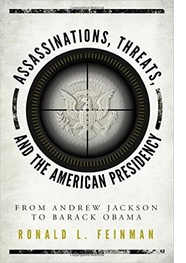If You’re A New Yorker 2016 Is Your Year

The state of New York has had a massive effect on Presidential elections throughout American history. It had the most electoral votes of any state from 1812 through 1968, but then lost that status to California in 1972. But now it is coming once again into the forefront of American politics.
 Four
Presidents were elected from New York—Martin Van Buren in 1836;
Grover Cleveland in 1884 and 1892; Theodore Roosevelt in 1904; and
Franklin D. Roosevelt in 1932, 1936, 1940, and 1944. Additionally,
Millard Fillmore succeeded to the Presidency in 1850, and was from
Buffalo, New York; and Chester Alan Arthur succeeded to the
Presidency in 1881, and was from New York City, although born in
Vermont.
Four
Presidents were elected from New York—Martin Van Buren in 1836;
Grover Cleveland in 1884 and 1892; Theodore Roosevelt in 1904; and
Franklin D. Roosevelt in 1932, 1936, 1940, and 1944. Additionally,
Millard Fillmore succeeded to the Presidency in 1850, and was from
Buffalo, New York; and Chester Alan Arthur succeeded to the
Presidency in 1881, and was from New York City, although born in
Vermont.
Twelve Presidential nominees, who lost the election to their opponent, were from New York State. Rufus King lost to James Monroe in 1816; Horatio Seymour lost to Ulysses S. Grant in 1868; Horace Greeley lost to Grant in 1872; Samuel Tilden lost to Rutherford B. Hayes in 1876 (although he won the popular vote); Grover Cleveland lost to Benjamin Harrison in 1888 (although he won the popular vote); Alton Parker lost to Theodore Roosevelt in 1904; Charles Evans Hughes lost to Woodrow Wilson in 1916; Alfred E. Smith lost to Herbert Hoover in 1928; Thomas E. Dewey lost to Franklin D. Roosevelt in 1944 and to Harry Truman in 1948; and third party nominees Martin Van Buren (Free Soil Party 1848) lost to Zachary Taylor; Millard Fillmore (American Party 1856) lost to James Buchanan; and Theodore Roosevelt (Progressive Party 1912) lost to Woodrow Wilson.
The New York electoral vote decided three Presidential elections in the 19th century, including 1844, when Henry Clay lost to James K. Polk; 1848, when Lewis Cass was defeated by Zachary Taylor; and 1884, when Grover Cleveland triumphed over James G. Blaine.
We also have had eleven Vice Presidents from New York including Aaron Burr under Thomas Jefferson; George Clinton under Thomas Jefferson and James Madison; Daniel Tompkins under James Monroe; Martin Van Buren under Andrew Jackson; Millard Fillmore under Zachary Taylor; William Wheeler under Rutherford Hayes; Chester Alan Arthur under James A. Garfield; Levi Morton under Benjamin Harrison; Theodore Roosevelt under William McKinley; James Sherman under William Howard Taft; and Nelson Rockefeller under Gerald Ford.
Twelve other New Yorkers competed for President, including George Clinton in 1808; Daniel Tompkins in 1816; William H. Seward in 1860; Averell Harriman in 1952 and 1956; Nelson Rockefeller in 1960, 1964, and 1968; Robert F. Kennedy in 1968; John Lindsey and Shirley Chisholm in 1972; Jack Kemp in 1988; Rudy Giuliani in 2008; Hillary Clinton in 2008 and 2016; and George Pataki in 2016.
With all of this impact of the Empire State, now in 2016, we have the unique situation of three New Yorkers competing for President out of the final five still in the race in April. Former New York Senator Hillary Clinton, who has lived in Westchester County since she left the White House with her husband Bill Clinton in 2001; real estate mogul and reality TV star Donald Trump who grew up in Queens County, New York, and has always had New York City as his major residence; and Vermont Senator Bernie Sanders, who grew up in Brooklyn, New York until the age of 18 are the three New Yorkers in the race.
The two remaining Democrats still in the race guarantee that the party nominee will have a connection to New York, the first time since Franklin D. Roosevelt was nominated for his fourth term in 1944. And if Donald Trump survives the Republican National Convention fight that is to come, and emerges as the party nominee, it insures the first all New York Presidential election of the two major political parties since that same year of 1944, when Thomas E. Dewey lost to FDR. The next earliest such occasion was when Theodore Roosevelt defeated Alton Parker in 1904!
So this 2016 Presidential election could be very historic in making New York State, which has slipped to number 4 in population, again significant as it was so often in the history of our Presidential elections.